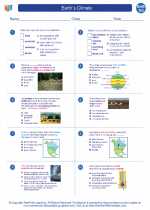Ileum
The ileum is the final section of the small intestine in the digestive system. It is located between the jejunum and the cecum, which is the beginning of the large intestine. The primary function of the ileum is to absorb nutrients from digested food, particularly vitamin B12, bile salts, and whatever products of digestion were not absorbed by the jejunum. The inner surface of the ileum has numerous finger-like projections called villi, which increase the surface area for absorption.
Structure of the Ileum
The ileum is a muscular tube that is approximately 2-4 meters long in adults. It is lined with a mucous membrane that contains numerous folds, villi, and microvilli, which greatly increase the surface area for nutrient absorption. The ileum is also surrounded by a network of blood vessels and lymphatic vessels that transport absorbed nutrients to the rest of the body.
Functions of the Ileum
The primary functions of the ileum include:
- Absorption of vitamin B12, which is important for the production of red blood cells and maintenance of the nervous system
- Absorption of bile salts, which are essential for the digestion and absorption of fats
- Absorption of remaining products of digestion, including carbohydrates, proteins, and fats
Study Guide
When studying the ileum, it is important to focus on the following key points:
- Location of the ileum in the digestive system
- Structure of the ileum, including its length, mucous membrane, villi, and microvilli
- Functions of the ileum, specifically its role in the absorption of vitamin B12, bile salts, and remaining products of digestion
- Connection between the ileum and other parts of the digestive system, such as the jejunum and cecum
Additionally, it can be helpful to understand common disorders or diseases that affect the ileum, such as Crohn's disease, which is an inflammatory condition that can impact the function of the small intestine, including the ileum.
Remember to review diagrams and illustrations of the digestive system to visualize the location and structure of the ileum. Understanding the role of the ileum in the overall process of digestion and nutrient absorption will also provide context for its importance in the human body.
Good luck with your studies!
.◂Earth Science Worksheets and Study Guides High School. Earth`s Climate

 Worksheet/Answer key
Worksheet/Answer key
 Worksheet/Answer key
Worksheet/Answer key
 Vocabulary/Answer key
Vocabulary/Answer key
 Vocabulary/Answer key
Vocabulary/Answer key
 Vocabulary/Answer key
Vocabulary/Answer key
